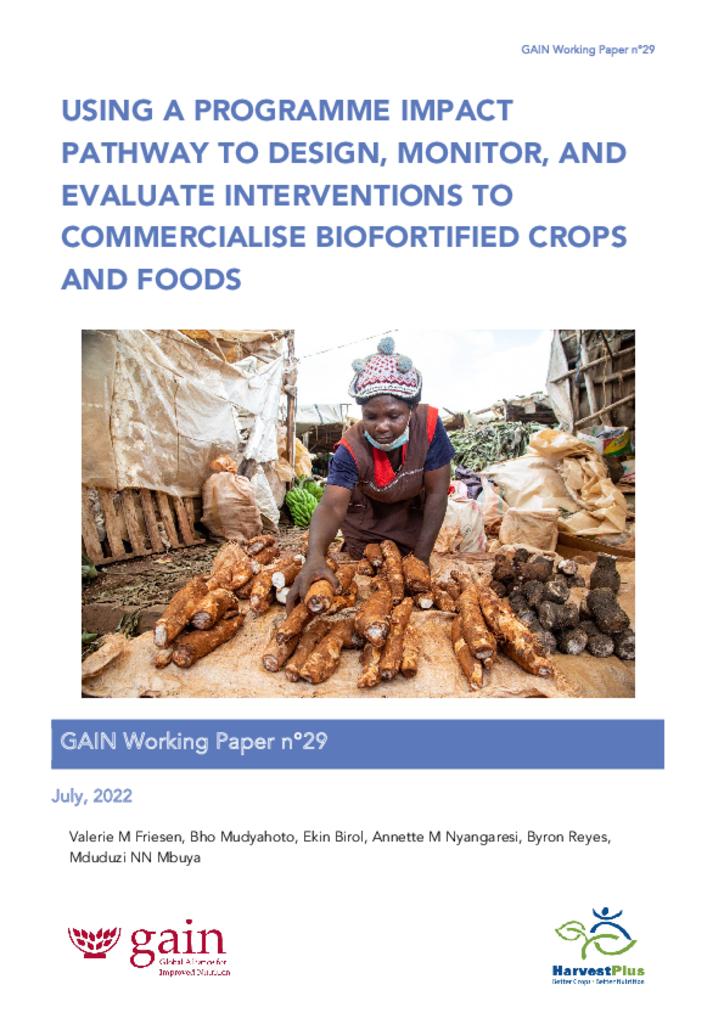Using a theory of change (TOC; a simplified definition of how and why an intervention is expected to work) or a programme impact pathway (PIP; a more detailed description of the causal pathways through which an intervention is delivered) to guide design, monitoring, and evaluation efforts is increasingly being used across various nutrition interventions, yet there are few documented examples in biofortification programmes. During the inception phase of the Commercialisation of Biofortified Crops (CBC) programme, which aims to scale up production and consumption of biofortified foods in six countries in Africa and Asia, a PIP was developed and used to inform the design of commercialisation strategies and their monitoring and evaluation. The objective of this paper is to describe that process.
Using a generic TOC for biofortification as a starting point, we developed detailed PIPs for each of the nine country-crop combinations. Within each PIP, we identified the commercial pathway(s) and selected the one(s) with the most potential for impact. We then identified the binding constraint along each pathway and a set of activities and resources to tackle it. This process formed the basis of the country-crop commercialisation strategies and associated workplans. Additionally, we developed a monitoring reference manual that included a set of standardised indicators mapped to the PIP and detailed indicator reference sheets. These tools were contextualised for each country-crop combination and formed the basis of the programme’s monitoring and evaluation plans.
Using a PIP to guide the development of programme strategies and measurement of achievements is good practice to ensure that programmes have high potential for impact and that relevant information needed to understand the evolution of results along the PIP is collected throughout programme implementation.
